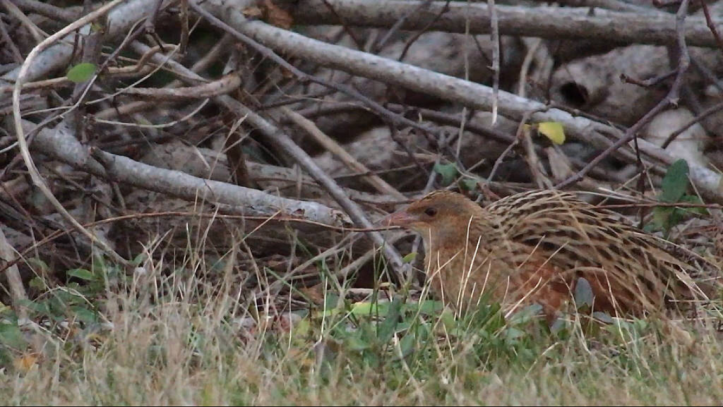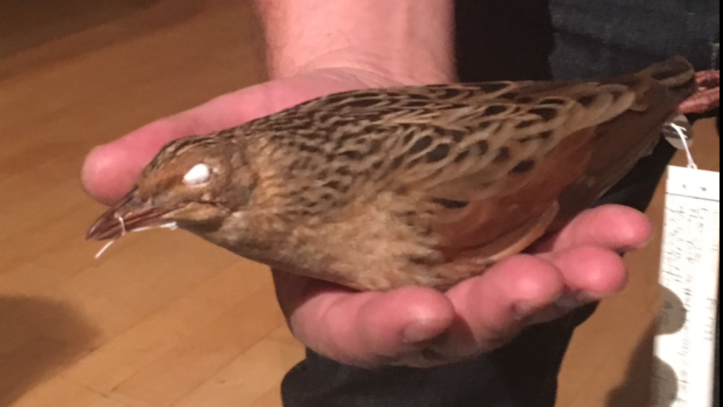I love looking at historical records. At least once every couple of weeks, I’ll find myself scrolling up and down New York state’s eBird page, marveling at what fantastic finds graced the area with their presence. And of these, the oldest records, from the late 1800s, always fascinate me the most. These include such NY “mega” rarities as Mottled Petrel and Brown-headed Nuthatch. While on the state list, these birds remain on the farthest edges of the realm of possibility. However, as the events of this past week prove, these “impossible possibilities” can indeed come into fruition.
At 11:43 a.m. of Tuesday, November 7th, I was sitting in history class, typing notes onto a Google doc. Everything was checking out to be a ho-hum, ordinary day, and as per usual, I was overcoming what grogginess remained from the morning. That’s when a tab appeared on the upper right corner of my screen, and my thought process went something like this: “A new email? No big deal, it’s probably just another needs alert. No, wait, it’s from the listserv. Let’s see here, it’s probably nothing too important.” I took one look at the email’s subject and my heart abruptly skipped a beat, possibly several. The message was from Ken and Sue Feustel, two of Long Island’s top birders, and it was entitled, “Corn Crake at Cedar Beach (Suffolk Co.).”
It took a moment for that to fully click in my brain. Cedar Beach. Cedar Beach, that’s one hour away. Upon reading the email, my eyes widened more and more. A Corn Crake, an incredibly rare vagrant to North America, was currently pecking around at the side of a highway one hour away from where I was sitting. “This is no joke,” read the initial announcement, a much-needed affirmation that this wasn’t an elaborate prank. This was a “historical records” bird. On the radar, but just hanging onto the edge of possibility. There had never been a “chaseable” Corn Crake in North America ever, and only a few sightings in the last 50 years.
The Corn Crake is a species of rail that breeds in hayfields and tall grass meadows in Europe, and winters in sub-saharan Africa. Even on its home range, it is a very secretive and sought-after bird. Its plump, rotund appearance and overall pale-golden-brown coloration give it the qualities of an Old World quail or perhaps a chicken, and its stout, strong bill is a far cry from the long, decurved bills of our familiar Clapper and Virginia Rails. The crake’s easy-to-remember scientific name, Crex crex, is derived from its far-carrying, mechanical “krek-krek” call. Although certainly not one of the most vocally talented birds, during the early breeding season, a male Corn Crake will repeat this song thousands of times per night! As the hours ticked by, it appeared that the bird was sticking around. The first back-of-camera photos surfaced and spread like wildfire across birding circles on social media, and more and more reports came in that the bird was still around. I eventually summed up the courage to ask my parents whether it would be possible to try for it after school that day, but they declined, admittedly for good reason. There was no possible way to get to the spot before sunset even if we began the drive the minute my last period class ended. On Wednesdays, however, my last period class ends a full 45 minutes earlier than on Tuesday, and thus my parents agreed to a chase should the crake be re-found the following morning. I knew the odds of this bird continuing were very slim, but I retained a sliver of hope.
The next morning, when I checked the listserv, a huge sigh of relief escaped my lips. The crake (now affectionately named “Crakie”) was still there and was apparently being quite cooperative. In between classes, and during my free period, I repeatedly (and somewhat obsessively) checked eBird, the listerv, Facebook, and anywhere else I could receive word that the bird was still there. Lunch rolled around, and then, what seemed like an eternity later, last period. The instant that my last period class was dismissed, I ran for the parking lot. My mom was already there and so we were able to get on the road at exactly 3 pm. Plugging the crake stakeout’s (crakeout’s?) coordinates into Google Maps, the route showed that we would get there by 4:25. The sun would go down at 4:43. We were racing the sun, but we were determined to win. As we sped due south and east, the ETA kept getting later. 4:26, 4:27, rising and falling before eventually settling on 4:30, leaving us a dangerously low amount of time at the stake/crakeout before nightfall. After an hour and a half of having my eyes glued to the GPS, we arrived at the stretch of Ocean Parkway in the vicinity of the crake spot.
As we approached the pin, we carefully scanned the road for birders – our only hope of seeing the bird. Just after we passed the pin, there they were – a group of ~5 people standing in the median, armed with cameras, scopes and binoculars. We wasted no time in pulling over, scrambling out of the car, and speedwalking over to the “evening crowd”. There, we were greeted with the news we weren’t hoping to hear – they had just lost the crake a few minutes before we arrived. Arghhhh! After a minute or so of scanning the underbrush lining the opposite side of the road, however, one of the birders exclaimed that he had refound the bird! I took a quick look in his scope and there it was. A glorious, chicken-like rail from the Old World, casually preening just beyond the edge of the underbrush. After a minute, the bird began to walk out of the shrubs, onto the grassy strip on the edge of the highway. And there it began to feed, walking around and pulling up earthworms from the soil. The bird had a subtle beauty to it – the black streaks on its golden back, the little chestnut patches on its flanks and wings, and the way those aforementioned streaks narrowed at the crown, contrasting with the pale face and undersides, all made this bird look gorgeous to our fascinated eyes.


We watched the crake until after sunset, when it walked away, back through the bushes, presumably to roost. I followed the bird in my binoculars until it was just a moving pale apparition in the branches, and then it completely disappeared from view, somewhere deep in the brush and away from the road. This was our cue to head back west, toward the city.
The next morning, the crake’s story, to put it lightly, took a turn for the worse. At first light, birders hoping to catch a glimpse of the crake instead found it dead at the side of the road. The bird was given to the American Museum of Natural History, where it will now live on and serve science as part of the museum’s collection. An examination of the crake revealed fractures in both legs and its pelvis, making it obvious that the bird met its untimely demise due to a collision with a car. The crake’s death, and the subsequent revelation of its cause, sent shockwaves across the birding community. Certainly the concept of a vagrant bird dying is nothing new – in fact it has happened multiple times this year, perhaps most notably with the California Ross’s Gull being taken by a Peregrine Falcon. But that was a natural cause of death. This bird was directly killed by a human, and it is this fact that makes the Crakie’s demise all the more unfortunate and painful.

During the <48 hours of the Corn Crake’s documented stay, 170+ birders from near and far were able to view it and bask in its glory. I will certainly treasure my sighting for as long as I live, and I honestly highly doubt that I’ll ever have this opportunity again in my lifetime. Here’s to Crakie the Corn Crake – gone, but not forgotten.

Until next time,
Ryan Zucker
New York, NY
Fabulous. My I post this, or a link to it, on http://www.linnaeannewyork.org ? We have a post on the Corn Crake in the works. I do their website. I am port4u.net on WP.
LikeLike
Yes! That sounds great!
LikeLike
Thanks. Check out the post. Hope you joined and can come to meetings occasionally.
LikeLike
I took the liberty of making a link on http://linnaeannewyork.org/publications/observations/20171109-Corncrake-observation.html to this post. I hope you don’t mind. The council would like to invite you to contribute other field observations. Perhaps you know other birders who have things to contribute to the LSNY web site. Suggestions are welcome. Thanks Ryan.
I look forward to meeting you at one of the monthly meetings.
LikeLike